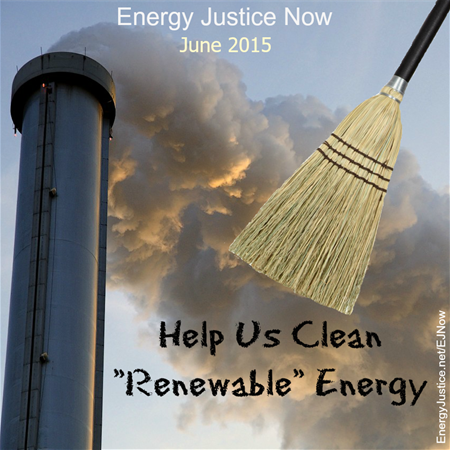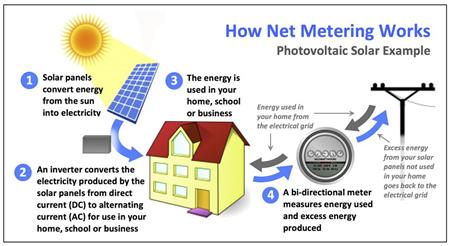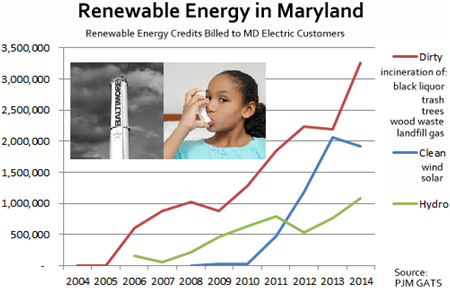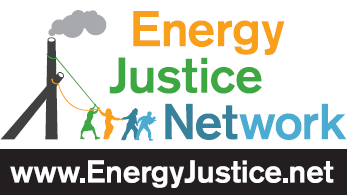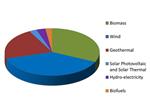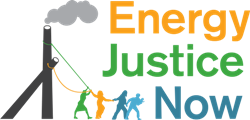 |
June 2015 Volume 2, Issue 5 |
|
Can
"renewable" energy do more damage to the climate than the fossil-fuel
heavy electric mix it replaces? That's what we're finding as we look at a
decade of compliance with Maryland's Renewable Portfolio Standard (RPS)
-- one of the dirtiest in the nation. Energy Justice Network is
building a coalition to clean up this dirty law, where the majority of
mandated "renewable" energy has come from supporting smokestack
technologies from twelve states, as far as Wisconsin and Tennessee. Other state RPS laws are also supporting many polluting sources, though not all to the extent that Maryland's does. We'd love to work with any of you interested in cleaning up such laws in your state and could use your support in this work. These next few years are critical to determine the future of how electricity is made in the U.S. The electric utility industry is freaking out that their days are numbered due to rooftop solar becoming dirt cheap. They're attacking state net metering laws, which enable rooftop solar, claiming that it's bad for black people, though the national NAACP has been pushing back. We've helped NAACP and Our Power Campaign develop a net metering toolkit to help you defend and expand net metering programs.
- by Our Power Campaign Net
Metering is a "distributed energy" policy that allows families,
businesses, or small groups of people to reduce electricity bills by
generating some or all of their electricity through rooftop solar panels
or other technologies that are tied into the electric grid.
Does Solar Energy Really Harm Communities of Color? - by Lee Fang, The Intercept Politic365,
a media website that touts itself as "the premier digital destination
for politics and policy related to communities of color," has emerged as
a leading online critic of home solar energy, publishing nearly a dozen
articles about how policies to promote solar energy-powered homes will
harm minority groups, particularly African Americans.
Maryland's Dirty "Renewable" Energy Bills - by Mike Ewall, Energy Justice Network Maryland's renewable portfolio standard
(RPS) is one of the nation's dirtiest renewable energy mandates. From
2004 to 2014, 58% of the Tier I "renewable" energy came from smokestack
sources: the burning of trash, trees, black liquor (toxic paper mill waste), wood "waste," and toxic landfill gases.
In 2014, smokestacks still provide more than half (52%), while wind
power just declined for the first time, now providing only 27% of the
state's "renewable" energy.
Energy Justice Now provides critical reporting on the full spectrum of the Dirty Energy Resistance, highlighting the voices of community organizers battling fossil fuels, nuclear power, and biomass and waste incineration from sea to shining sea. We are accepting submissions at Josh AT energyjustice DOT net. Check out our archive of back issues of Energy Justice Now. Photo: B. Monginoux, photo-paysage.com In Solidarity,
|
States with Renewable Portfolio Standards
Thirty-eight states and the District of Columbia have adopted Renewable Portfolio Standards (RPS), setting goals or mandates for a certain percentage of the state's energy to be "renewable." While emissions-free energy sources like solar and wind are components of state RPS laws, so too are polluting biomass and trash incineration. Currently, the #1 form of "renewable" energy in the U.S. is bioenergy, which includes burning trees, crops, manure, and trash for electricity, heating and transportation fuel. RPS laws that encourage solar, wind, and tidal energy can reduce greenhouse gas emissions, limit air pollution, and protect land and water. However, RPS laws that support landfill gas, biomass and trash incineration -- the low hanging fruit of alternative energy -- can do more harm than good. It's
important for clean energy advocates to ensure states have strong RPS
laws, but it's only a step forward if combustion sources aren't part of
the mix. Clean Power Plan The Clean Power Plan (CPP), released by the U.S. Environmental Protection Agency (EPA) in June, seeks to reduce carbon emissions from existing power facilities. The CPP proposes a federal framework, though states have some flexibility in how to achieve carbon reduction goals. Energy Justice Network is involved in the process, supporting aspects of the Clean Power Plan, while having serious concerns about others. We don't want to see states develop implementation plans that primarily throw money at nuclear power and support a transition from coal to fuels worse than coal for the climate: natural gas, trash and biomass, as the CPP encourages. Are
you, or any local/state organizations you're affiliated with, planning
to advocate around the implementation of the Clean Power Plan in your
state over the next year? Would you like to be part of a coordinated effort to help strengthen the plan for your state? To engage on this issue, please contact Mike Ewall, director, at mike@energyjustice DOT net.
Supreme Court Kills Mercury Rule On June 28, in a 5-4 ruling, the U.S. Supreme Court struck down EPA's regulations to limit mercury from coal and oil power plants. This is bad news, but we hope this creates some economic uncertainty for the 300+ proposed gas-fired power plants, allowing some time for wind and solar to fill the gap. Hawaii to Go 100% Renewable You've probably heard the big news that Hawaii plans to go 100% renewable by 2045. Overall, this is a positive development, yet to ensure that genuinely clean energy is used, we must pressure legislators -- and even some environmental groups -- to do the right thing. Of the 1,305 Gigawatt Hours of renewable energy produced in Hawaii in 2013, 38.6% came from wind, 34% from biomass, trash incineration and biofuels, 22% from geothermal, and only 2.6% from solar. Despite this reality, in the vast majority of the media stories, solar is typically front and center. While Hawaii has the highest proportion of residential solar installed (12% of homes), antiquated utilities are starting to ban new residential solar installations. Wind power has been challenging to site, and floating off-shore wind plans will be costly. Geothermal has been particularly damaging and controversial in Hawaii. Without a stronger effort to beat back proposed biomass and waste incinerators, Hawaii's "renewable" energy supply will come from a mix of wind, solar, destructive geothermal, and highly polluting biomass, landfill gas and waste incinerators. While
we strongly support Hawaii's intention to move towards a clean energy
future, it's important to remember that not all "renewable" energy is
created equal. |
||||
| |
|||||
